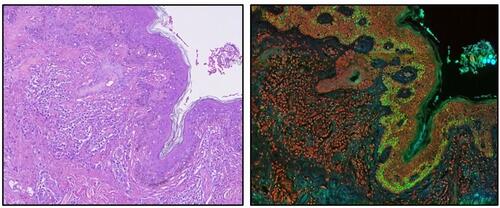New Approach Identifies Multiple Melanoma Drug Resistance Biomarkers
By LabMedica International staff writers
Posted on 15 Jul 2014
A recent paper described the use of liquid chromatography-multiple reaction monitoring mass spectrometry (LC-MRM) for assessing melanoma biomarkers in the blood in order to determine the effectiveness of chemotherapy.Posted on 15 Jul 2014
Modern chemotherapeutic techniques based on treatment with multiple anticancer drugs require the identification and measurement of new classes of biomarkers in order to determine the efficacy of the treatment. Investigators at the Moffitt Cancer Center (Tampa, FL, USA) recently described the use of LC-MRM for this purpose. They developed and used an LC-MRM platform to study the adaptive signaling responses of melanoma cells to inhibitors of MEK (AZD6244) and HSP90 (XL888).
The mitogen-activated protein–kinase (MEK) pathway comprising the kinases RAF, MEK, and ERK is central to cell proliferation and survival but is deregulated in more than 90% of melanomas. Various MEK inhibitors are currently being evaluated in clinical studies.
XL888 is an orally available small molecule inhibitor of HSP90 (heat shock protein 90), a chaperone protein that promotes the activity and stability of a range of client proteins, including kinases, which play key regulatory roles in cells. The activity of HSP90 is particularly prominent in tumor cells, where it promotes the activity of proteins controlling proliferation and survival. XL888 is a potent and selective ATP-competitive inhibitor of HSP90, and binds to its target in a manner that is structurally distinct from other HSP90 inhibitors currently in use.
Results obtained during the current study showed that XL888 had good anti-tumor activity against NRAS mutant melanoma cell lines as well as BRAF mutant cells with acquired resistance to BRAF inhibitors both in vitro and in vivo. LC-MRM analysis showed HSP90 inhibition to be associated with decreased expression of multiple receptor tyrosine kinases. MEK inhibition was found to be associated with signaling through the NFkappaB and WNT signaling pathways, as well as increased receptor tyrosine kinase expression and activation
Overall, the LC-MRM approach was able to detect more than 80 cancer signaling proteins simultaneously. It was highly sensitive and could be applied to fine needle aspirates from xenografts and clinical melanoma specimens (using only 50 micrograms of total protein).
“While targeted therapy drugs, such as BRAF and MEK inhibitors, have been associated with impressive responses in melanoma patients, most patients will eventually fail therapy,” said senior author Dr. Keiran Smalley, associate member of the cancer biology and evolution program at the Moffitt Cancer Center. “It is likely that long-term management of melanoma patients will require combinations of drugs.”
The LC-MRM study was published in July 2014 issue of the journal Molecular and Cellular Proteomics.
Related Links:
Moffitt Cancer Center











.jpg)

